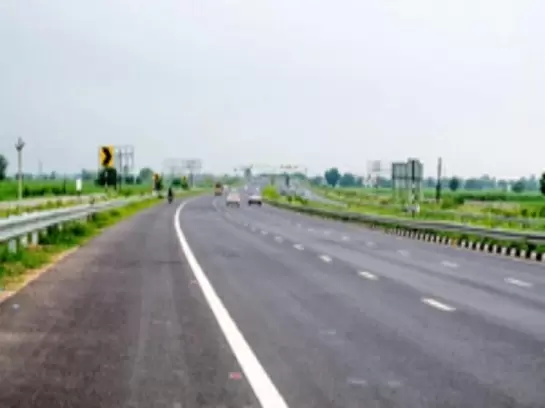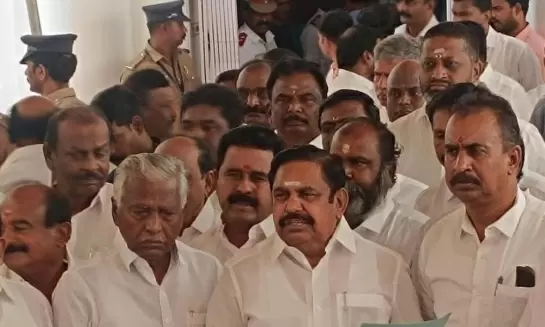Varanasi's PM2.5, NO2 levels alarming
New Delhi
15-December-2021

photo:IANS
An analysis of PM2.5 and NOx levels in Varanasi - Prime Minister Narendra Modi's Parliamentary constituency - has shown that its levels remained much above the Central Pollution Control Board's (CPCB) safety limit for the last three years consistently.
The CPCB prescribes 40 microgram per metre cube annual average as the safety standard for both PM2.5 and NO2 levels. The WHO's prescribed safety limits for NO2 are 25 microgram per metre cube for daily average and 10 microgram per metre cube for annual average.
Vehicular emissions are one of the key sources of nitrogen dioxide (NO2) pollution, along with sources such as fossil-fuel based power plants, incineration plants, wastewater treatment facilities, glass and cement production facilities and oil refineries, the analysis by the NCAP Tracker, a platform floated by advocacy think-tank Climate Trends, showed.
The NCAP Tracker evaluated the data from Continuous Ambient Air Quality Monitoring Systems (CAAQMS) set up in Varanasi. There are four monitors in Varanasi. However, two of them were added in June and July this year. In all, three monitors did not make up about 70 per cent of monitored days for annual average, so only the monitor that was present in 2019 and 2020 was considered for annual comparisons.
It is the one in the heavily crowded and busy traffic area of Ardhali Bazaar that has been the longest running station in the city, with annual NO2 average almost 1.5 times the CPCB limit.
In India, the meteorological condition is highly conducive for rapid conversion of the precursor gases like nitrogen dioxide and sulphur dioxide (NO2 and SO2) to secondary PM2.5. Hence, to control PM2.5, the emission control of the precursor gases is necessary. Local level exposure to NO2 leads to a range of environmental and health impacts.
Watch This TWL Video
The city of Varanasi - spread over 82 sq km with 1 million+ population with complex urban sources of pollution - is one of the Smart Cities that is undergoing massive infrastructure development. The power shortages are compensated for by diesel gensets like most Tier 3 towns in India, and unlike the 15-year limit for scrapping old vehicles in Delhi, Uttar Pradesh's transport scrappage policy allows for 20-year-old vehicles to ply on the roads.
S.N. Tripathi from the civil engineering department at IIT Kanpur, who's also a steering committee member at the National Clean Air Programme of the Ministry of Environment, Forest and Climate Change, said, "Dense monitoring using sensors under smart city projects can help track and mitigate pollution sources."
A 2018 source apportionment study by Banaras Hindu University (BHU) on local and distance sources of urban PM2.5 in Varanasi had identified traffic as the major probable local source, which contributed maximum to high PM levels followed by paved road dust and local combustion activities.
Land use regression analysis also identified traffic variables such as heavy vehicle intensity, distance from the highway, traffic intensity (within 500 m buffer) and percentage of green cover as major factors influencing PM2.5 distribution in the city. Along with meteorological factors, NO2 and Carbon Monoxide (CO) were also identified as major gaseous air pollutants which modified PM concentrations in the holy city. -IANS
More Headlines
Karnataka Withdraws CID Probe in Ranya Rao Gold Smuggling Case
New Kerala Guv Strikes Cordial Tone, Hosts CM Vijayan And FM Sitharaman In Delhi
Digital Payments Surge in India: 18,120 Crore Transactions in FY24-25
Weather Dept Predicts Heavy Rains In Several TN Districts
Chitra Subramaniam’s Book Boforsgate Exposes Arms Trade, Corruption, and Political Intrigue
Karnataka Withdraws CID Probe in Ranya Rao Gold Smuggling Case
New Kerala Guv Strikes Cordial Tone, Hosts CM Vijayan And FM Sitharaman In Delhi
Digital Payments Surge in India: 18,120 Crore Transactions in FY24-25
Weather Dept Predicts Heavy Rains In Several TN Districts
Chitra Subramaniam’s Book Boforsgate Exposes Arms Trade, Corruption, and Political Intrigue










